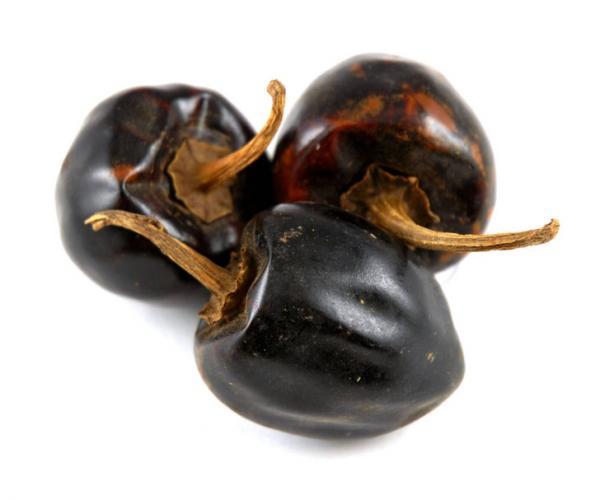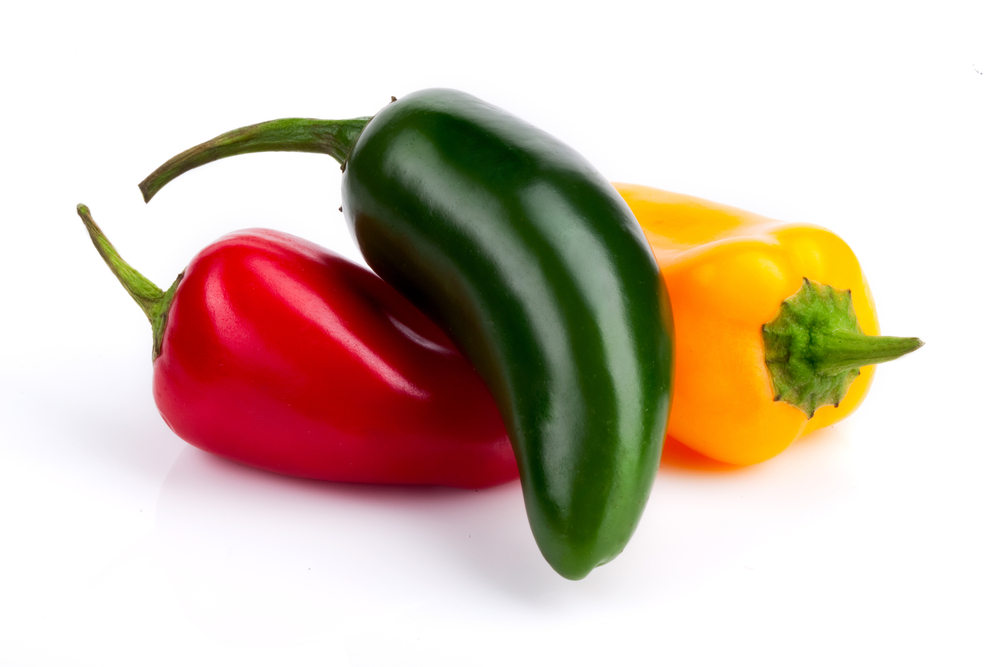In the Mexican kitchen, chilies are as commonplace as salt and black pepper — yet they tend to arouse a good deal more fervor amongst chefs than either pepper or salt. Enrique Olvera, for instance, is especially enamored, relying on smoky dried costeños to spike the mayonnaise that coats baby corn elotes at Pujol (ranked amongst the world’s best restaurants), and incorporating fruity pasillas in salsa, topping lobes of burrata at Cosme in NYC. “The common misconception concerning chilies is that they’re solely about heat,” Olvera said. “Yet they come in such an incredible variety, each with a very special flavor, and suited for a range of different uses.”
Olvera eloquently preached the gospel of chilies during his recent workshop at Taste Talks , waxing poetic about his favorite, go-to pepper (the multi-purpose serrano), and sharing the secret to his famous mole madre (treated with a triple dose of rare Oaxacan chilhuacles). So if it effectively lit a fire under you — as it did us — to up your chili game at home, here’s a helpful crib sheet of Mexico’s most commonplace peppers, including their Scoville ranking, or SHU (the official measurement of their spice level), and a rundown of their unique culinary characteristics.

Poblano (1,000-2000 SHU): Referred to as “anchos” when dried, or “chipotles” when smoked and dried, poblanos bring very little to the table by way of heat. Which is why the fruity, meaty, plus-sized peppers are commonly enjoyed fresh, roasted and whole, in dishes like chile rellenos (stuffed with cheese, coated with egg and deep-fried).

Cascabel (1,000-3,000 SHU): Translated to “little bell” (also known as a “rattle chili,” for the way the seeds shake inside of the flesh when dried), smoky and earthy cascabels are harvested all over Mexico, in towns like Jalisco, Durango and Guerrero. Traditionally roasted on a comal in order to develop their complex, nutty flavor, the wine-dark peppers make a popular addition to salsas, soups and sauces, including a signature mole enveloping enchiladas and grilled meats.
Pasilla (250-4,000 SHU): Spanish for “little raisin” (an apt characterization of their flavor) pasillas are also called “chile negros” because of their inky, wrinkled skins. Derived from fresh chilaca peppers, these dried chilies are long, narrow, and frequently combined with fruit, or used to make mole or punchy pepper jellies.
Guajillo (2,500-5,000 SHU): The dried version of the mirasol chili, reddish-brown guajillos are an exceedingly popular pepper throughout Mexico (and beyond), prized for their vibrant, tangy flavor and gentle, sweet heat. A must in mole (and a perfect playmate for chocolate), they’re available powdered, in paste, or whole, which require an extra long soaking in order to permeate their thick, leathery skins.

Jalapeno (2,500-10,000 SHU): A good gateway pepper, the omnipresent jalapeno — originally from Veracruz, Mexico — runs the gamut from mild (especially if you remove the seeds and ribs) to legitimately hot (small brown lines, or “corking,” is generally a good indication of a more incendiary chili). Jalapenos are generally enjoyed fresh and green, and are frequently pickled.

Serrano (10,000-23,000 SHU): Also typically consumed raw instead of dried, and a standard addition to pico de gallo and salsa, the slender, multi-colored serrano (found in shades of red, brown, orange, yellow and green) hails from the mountainous regions of Puebla and Hidalgo, and is a great alternative to the jalapeno, if you’re up for an extra kick.
Chile de Arbol (15,000-30,000 SHU): Called “tree chilies” for their woody stems (and alternatively dubbed bird’s beak chilies and rat tail chilies because of their small, slim, and slightly curved shape), this is a truly potent pepper, found fresh, powdered or dried and even used as decoration, owing to their festive, vibrantly red hue.
Habanero (100,000-350,000 SHU): While ranked amongst the hottest peppers in the world, the waxy, thin-skinned, bell-shaped habanero (available in shades of red, orange, yellow, green, white and even purple) is more than just a delivery system for unadulterated spice, contributing citrusy and floral undertones to hot sauce, marinades and salsas.
Featured photo by Sarah Zorn, others by Max Branigan











